Theodore Paul Wright (May 25, 1895 – August 21, 1970), also known as T. P. Wright, was a U.S. aeronautical engineer and educator.
Theodore Paul Wright (May 25, 1895 – August 21, 1970), also known as T. P. Wright, was a U.S. aeronautical engineer and educator.

He was born in Galesburg, Illinois on May 25, 1895. His father was the economist Philip Green Wright and his brothers were the geneticist Sewall Wright and the political scientist Quincy Wright. He graduated from Lombard College and Massachusetts Institute of Technology. He served in World War I. [1]
In 1936, he published an important paper entitled "Factors affecting the costs of airplanes" [2] which describes what is known as Wright's law or experience curve effects. The paper describes that "we learn by doing" and that the cost of each unit produced decreases as a function of the cumulative number of units produced. [3]
He served as administrator of the Civil Aeronautics Administration during 1944–1948. [4] When President Truman announced Wright’s resignation as Administrator of Civil Aeronautics on January 16, 1948, the New York Times reported that Wright felt he could not continue in office at a salary of $10,000 per year (equivalent to $110,000in 2021). [5]
He served as Cornell University's vice president in charge of research from 1948 to 1960 and served as acting president of Cornell University in 1951. He died on August 21, 1970. [6]

Donald Wills Douglas Sr. was an American aircraft industrialist and engineer.

Paul B. MacCready Jr. was an American aeronautical engineer. He was the founder of AeroVironment and the designer of the human-powered aircraft that won the first Kremer prize. He devoted his life to developing more efficient transportation vehicles that could "do more with less".
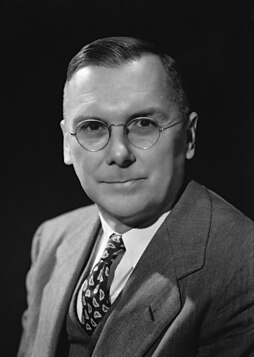
Hugh Latimer Dryden was an American aeronautical scientist and civil servant. He served as NASA Deputy Administrator from August 19, 1958, until his death.

William Frederick Durand was a United States naval officer and pioneer mechanical engineer. He contributed significantly to the development of aircraft propellers. He was the first civilian chair of the National Advisory Committee for Aeronautics, the forerunner of NASA.

Harry Frank Guggenheim was an American businessman, diplomat, publisher, philanthropist, aviator, and horseman.
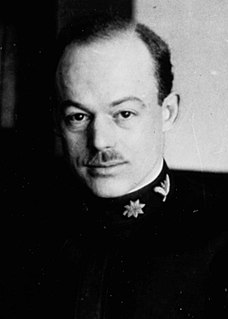
Jerome Clarke Hunsaker was an American naval officer and aeronautical engineer, born in Creston, Iowa, and educated at the U.S. Naval Academy and the Massachusetts Institute of Technology. His work with Gustav Eiffel outside Paris led to the first wind tunnel in the US at MIT. He was instrumental in developing a weather reporting and airway navigation. Hunsaker was also pivotal in establishing the theoretical and scientific study of aerodynamics in the United States. And he was primarily responsible for the design and construction of the Navy-Curtiss airplane (NC-4) that accomplished the first transatlantic flight, and the first successful shipboard fighter. Later he championed lighter-than-air flight but the loss of the Navy airship he designed, the USS Akron, led to the withdrawal of federal support. His WW2 chairmanship of the National Advisory Committee for Aeronautics (NACA) was notable for favouring the development of existing aircraft designs rather than experimenting with turbojets or missile technology.
Clark Blanchard Millikan was a distinguished professor of aeronautics at the California Institute of Technology (Caltech), and a founding member of the National Academy of Engineering.
The Daniel Guggenheim Medal is an American engineering award, established by Daniel and Harry Guggenheim. The medal is considered to be one of the greatest honors that can be presented for a lifetime of work in aeronautics. Recipients have included American and international individuals from aeronautical corporations, governments, and academia.

The Wright Brothers Medal was conceived of in 1924 by the Dayton Section of the Society of Automotive Engineers, and the SAE established it in 1927 to recognize individuals who have made notable contributions in the engineering, design, development, or operation of air and space vehicles. The award is based on contributed research papers.
Clifford Cook Furnas was an American author, Olympic athlete, scientist, expert on guided missiles, university president, and public servant. He was first cousin of the author Evangeline Walton. Furnas participated in the 5,000-meter event at the 1920 Olympic Games in Antwerp, Belgium.
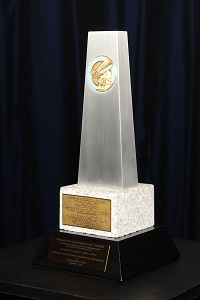
The Wright Brothers Memorial Trophy was established by the National Aeronautic Association (NAA) in 1948 after a trust fund was created in 1936 by Godfrey Lowell Cabot of Boston, a former president of the NAA. It is awarded to a living American for "significant public service of enduring value to aviation in the United States." The presentation of the award is made annually at the Aero Club of Washington, as close as possible to December 17 each year, the day on which, in 1903, the Wright brothers made the first flight in an airplane. The inaugural recipient of the trophy was William F. Durand, "a pioneer in aeronautics, naval propulsion and engineering research methods". Until 2010, winners of the award received a trophy depicting the Wright brothers' Wright Flyer aircraft. From 2010 onwards, a redesigned trophy featuring a silver obelisk and bronze inscription has been awarded.
Robert Gustav Loewy is an aerospace engineer who has been influential in the development of rotary-wing vertical take-off and landing aircraft. He was born in Philadelphia, Pennsylvania.

JoneeLynn Helms, known as Lynn Helms, was a US Marine Corps officer and former president of Piper Aircraft Corp. Due to his impressive aviation experience and solid Republican credentials he is most recognized for the years in which he served as administrator of the Federal Aviation Administration, having been appointed by President Ronald Reagan.
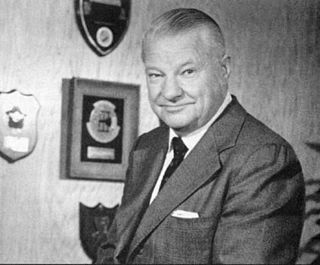
Clarence Leonard "Kelly" Johnson was an American aeronautical and systems engineer. He is recognized for his contributions to a series of important aircraft designs, most notably the Lockheed U-2 and SR-71 Blackbird. Besides the first production aircraft to exceed Mach 3, he also produced the first fighter capable of Mach 2, the United States' first operational jet fighter, as well as the first fighter to exceed 400 mph, and many other contributions to various aircraft.
Albert Francis Zahm (1862–1954) was an early aeronautical experimenter, a professor of physics, and a chief of the Aeronautical Division of the U.S. Library of Congress. He testified as an aeronautical expert in the 1910–14 lawsuits between the Wright brothers and Glenn Curtiss.
William Rees Sears was an aeronautical engineer and educator who worked at Caltech, Northrop Aircraft, Cornell University, and the University of Arizona. He was an editor of the Journal of the Aeronautical Sciences from 1955 to 1963 and the founding Editor of the Annual Review of Fluid Mechanics in 1969.

Swanson's law is the observation that the price of solar photovoltaic modules tends to drop 20 percent for every doubling of cumulative shipped volume. At present rates, costs go down 75% about every 10 years.
Robert Hauschild Liebeck is an American aerodynamicist, professor and aerospace engineer. Until retiring from his position as senior fellow at the Boeing Company. in 2020, he oversaw their Blended Wing Body ("BWB") program. He has been a member of the National Academy of Engineering since 1992, where he is an AIAA Honorary Fellow, the organization’s highest distinction. He is best known for his contributions to aircraft design and his pioneering airfoil designs known as the "Liebeck Airfoil". Since his retirement he remains active in aviation industry associations and continues to teach at UCI.
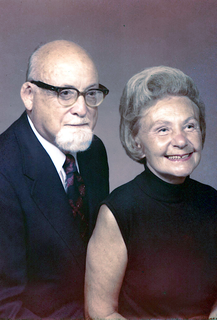
Max Erich (Eric) Reissner was a German-American civil engineer and mathematician, and Professor of Mathematics at the Massachusetts Institute of Technology. He was recipient of the Theodore von Karman Medal in 1964, and the ASME Medal in 1988
Dr. Wright served as Cornell University's vice president in charge of research from 1948 until his retirement in 1960. He was acting president of Cornell from Feb. 1 to July 1, 1951.
He was honored with a United States Freedom Medal, Wright Brothers Medal, and was the recipient of an honorary doctorate from Knox College.